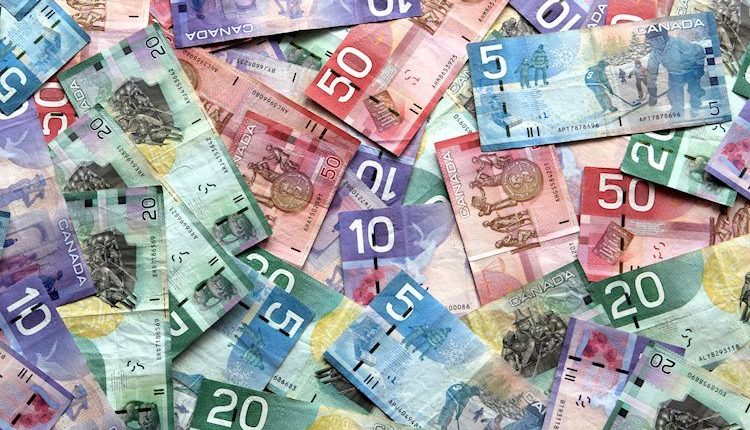- The Canadian Dollar is treading water after an extended weekend.
- Crude Oil is seeing thin action for Tuesday, sapping momentum from the Loonie.
- The broad-market focus remains on Gaza Strip geopolitics.
The Canadian Dollar (CAD) is trading flat against the US Dollar (USD) through the Tuesday market session, with only minor moves on the top and bottom ends. The pair set an early-day low of 1.3569 before rebounding to 1.3617, and the USD/CAD is now bouncing around the middle, testing around 1.3600.
Canada’s economic data remains thin for the trading week’s release schedule, leaving the CAD exposed to US Dollar flows and broader investor sentiment.
Market focus remains firmly planted on the ongoing Gaza Strip escalation following Israel’s ongoing response to Hamas rocket attacks over the weekend. Investors are keeping an eye out for any geopolitical spillover from the Israel-Hamas conflict spreading to nearby Middle East countries.
Daily Digest Market Movers: Canadian Dollar sees little momentum for Tuesday
- CAD flat for Tuesday as investors wait for headlines.
- Crude Oil is trading softly back, keeping the Loonie constrained.
- Broad-market sentiment is recovering cautiously from the weekend’s geopolitical escalation.
- USD/CAD traders will be looking ahead to Wednesday Producer Price Index (PPI) figures for the US; expected to show a slight increase year-on-year from 2.2% to 2.3%.
- Inflation remains a key focus for markets as investors hope for signs that the US Federal Reserve (Fed) will get pushed to making rate cuts sooner.
- Thursday brings US Consumer Price Index (CPI) numbers, markets looking for a month-on-month decline from 0.6% to 0.3%.
- Crude Oil’s price jump on-reaction to Gaza Strip conflict is unlikely to spark long-term moves.
- Oil market suppliers are struggling to meet global demand, but a massive overhang in refined gasoline reserves is pressuring prices back down.
Technical Analysis: Canadian Dollar seeing minor gains, USD/CAD struggling to hold 1.36
The USD/CAD pair is testing lower but still firmly planted between Tuesday’s top and bottom, though a minor uptick for the Canadian Dollar saw the pair shed pips from the 1.3600 level. The USD/CAD is now retesting into the low side of the 1.3600 handle heading into the back end of Tuesday trading.
The Greenback-Loonie pairing tumbled below the 200-hour Simple Moving Average (SMA) near 1.3640 in Monday’s trading, and the pair is struggling to develop a rebound.
Daily candlesticks see the USD/CAD declining for three straight days, down nearly 1.5% from the last high of 1.3785, and a continued decline will set the pair for a challenge of the 50-day SMA near 1.3536.
Canadian Dollar FAQs
The key factors driving the Canadian Dollar (CAD) are the level of interest rates set by the Bank of Canada (BoC), the price of Oil, Canada’s largest export, the health of its economy, inflation and the Trade Balance, which is the difference between the value of Canada’s exports versus its imports. Other factors include market sentiment – whether investors are taking on more risky assets (risk-on) or seeking safe-havens (risk-off) – with risk-on being CAD-positive. As its largest trading partner, the health of the US economy is also a key factor influencing the Canadian Dollar.
The Bank of Canada (BoC) has a significant influence on the Canadian Dollar by setting the level of interest rates that banks can lend to one another. This influences the level of interest rates for everyone. The main goal of the BoC is to maintain inflation at 1-3% by adjusting interest rates up or down. Relatively higher interest rates tend to be positive for the CAD. The Bank of Canada can also use quantitative easing and tightening to influence credit conditions, with the former CAD-negative and the latter CAD-positive.
The price of Oil is a key factor impacting the value of the Canadian Dollar. Petroleum is Canada’s biggest export, so Oil price tends to have an immediate impact on the CAD value. Generally, if Oil price rises CAD also goes up, as aggregate demand for the currency increases. The opposite is the case if the price of Oil falls. Higher Oil prices also tend to result in a greater likelihood of a positive Trade Balance, which is also supportive of the CAD.
While inflation had always traditionally been thought of as a negative factor for a currency since it lowers the value of money, the opposite has actually been the case in modern times with the relaxation of cross-border capital controls. Higher inflation tends to lead central banks to put up interest rates which attracts more capital inflows from global investors seeking a lucrative place to keep their money. This increases demand for the local currency, which in Canada’s case is the Canadian Dollar.
Macroeconomic data releases gauge the health of the economy and can have an impact on the Canadian Dollar. Indicators such as GDP, Manufacturing and Services PMIs, employment, and consumer sentiment surveys can all influence the direction of the CAD. A strong economy is good for the Canadian Dollar. Not only does it attract more foreign investment but it may encourage the Bank of Canada to put up interest rates, leading to a stronger currency. If economic data is weak, however, the CAD is likely to fall.
Read the full article here

